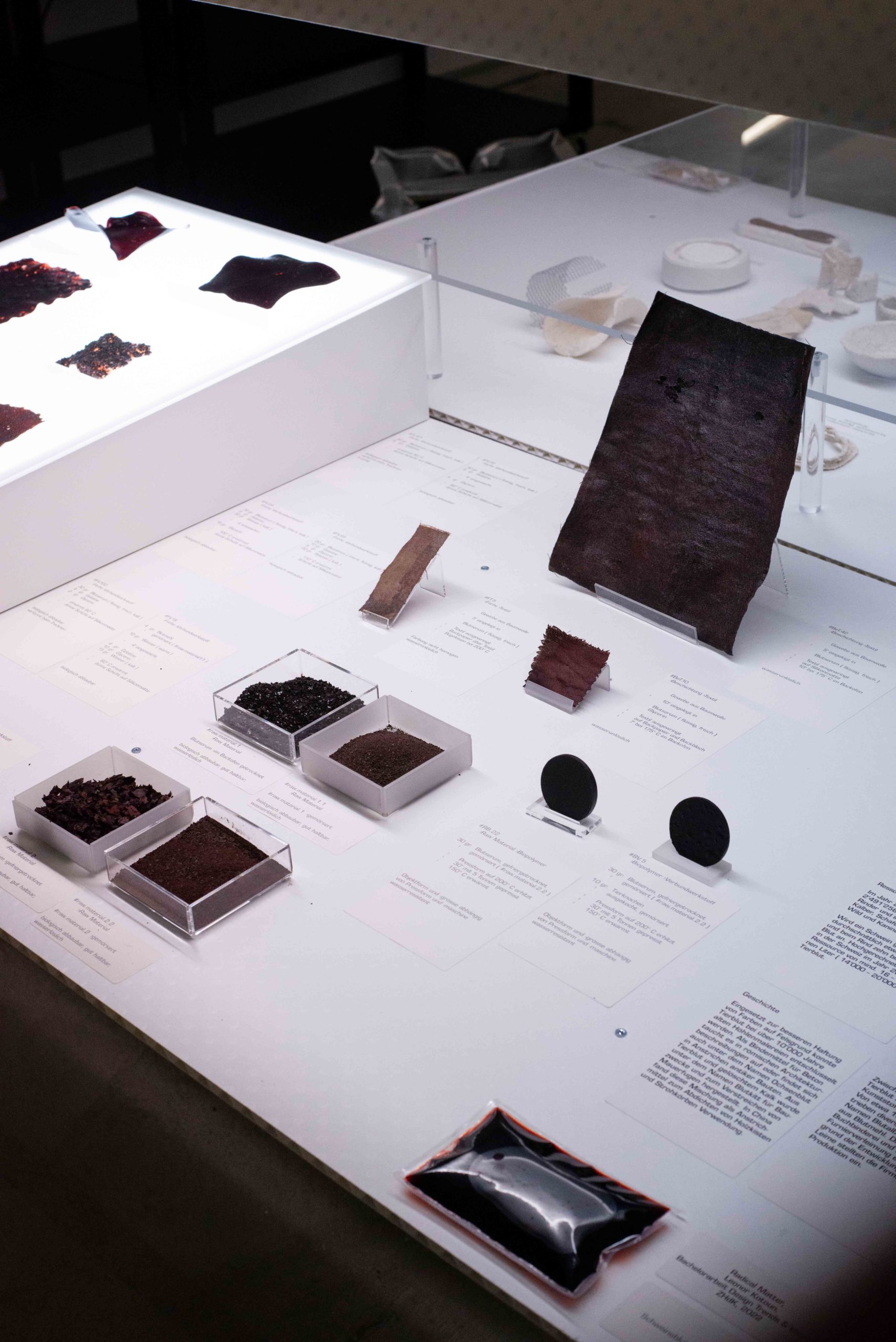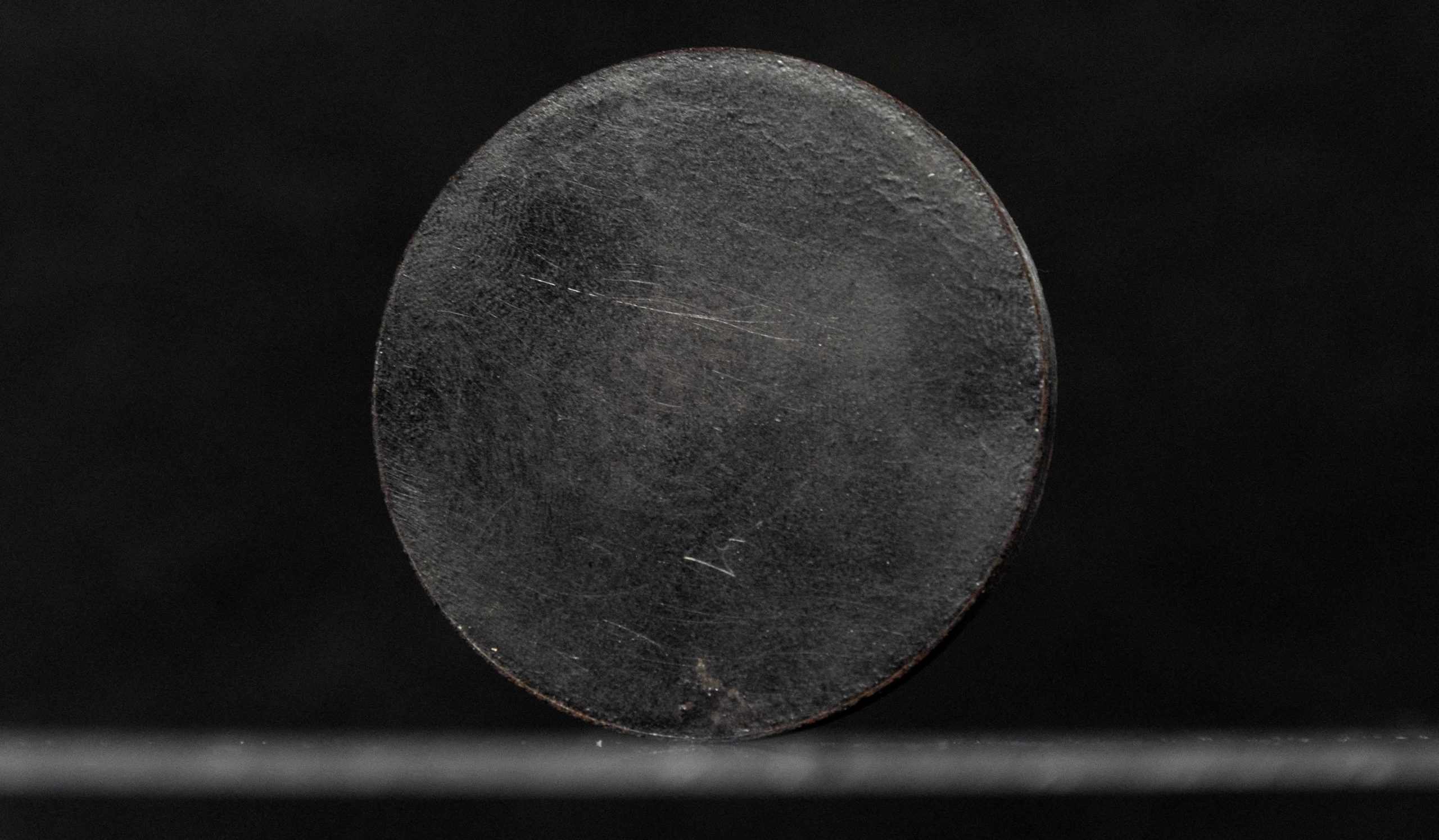21.03.2024
Appenzell | Switzerland
The Animal Blood Taboo
Taboo Gives Way to Fascination.
Over 10 million liters of animal blood are accumulated annually in the Swiss slaughter industry alone. Five to six liters of blood are accumulated when a pig is slaughtered, and 10 to 12 liters when a cow is slaughtered. Of this amount, only a small part is used as fertilizer, animal feed or for biogas production. Although it may be useful as a raw material, the use of animal blood clashes with social and cultural norms, bringing up feelings of disgust.
The explorative design research “Radical Matter” by Leonor Kotoun proves that in the right context, taboo materials can become valuable materials. The designer conducted 145 experiments with materials and explored possible uses of animal blood as paint, binder, coating, raw material and solid biopolymer. The new visually and haptically appealing aesthetics ensure that animal blood can be communicated and understood as a material in a new way. In this way, disgust is transformed into fascination and residual material into material that can gain social acceptance in the long term.

Animal blood meal turned biopolymer.
Dried blood, so-called blood meal from animals, is pressed under heat and several tons of pressure. The resulting biopolymer #RB.22 (2) consists of 100% animal blood. Due to the protein albumin contained in the blood, no binder is needed, and an extremely solid and biodegradable plastic prototype is created.
“The future of animal blood as a raw material depends on the societal debate on meat consumption.”
Primary raw materials such as fossil fuels are becoming scarce and secondary materials are moving into the spotlight. This includes substances that are not yet considered as raw materials. If the amount of animal blood produced is not radically reduced, the use of blood as a material would make perfect ecological sense. The collection of animal blood during the slaughtering process would be cost-efficient and its potential as a material highly versatile.


